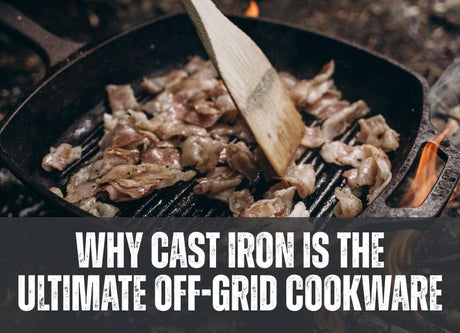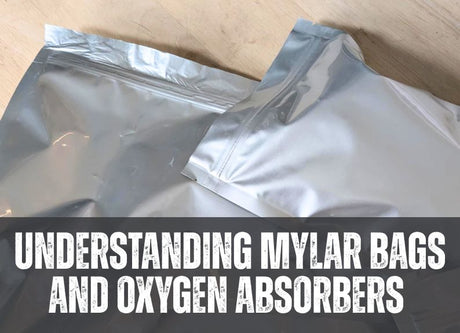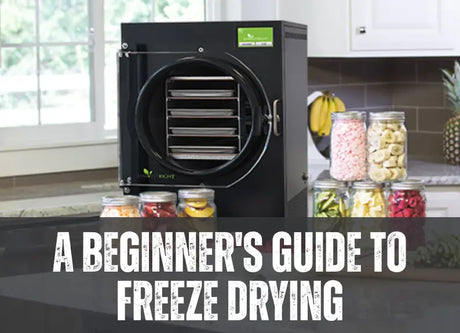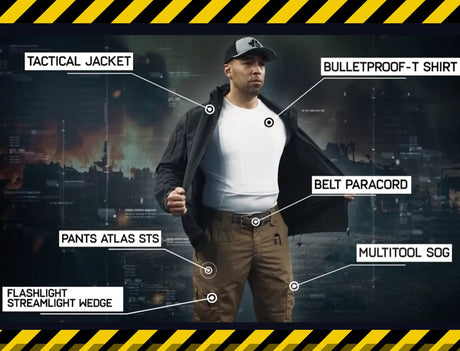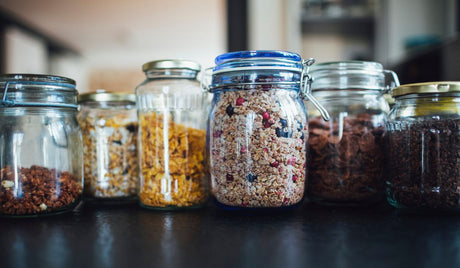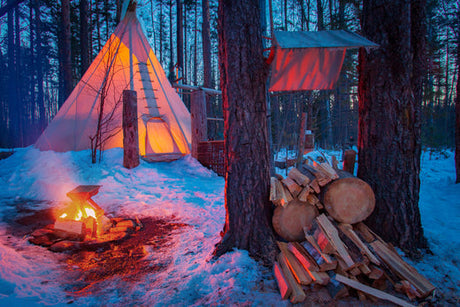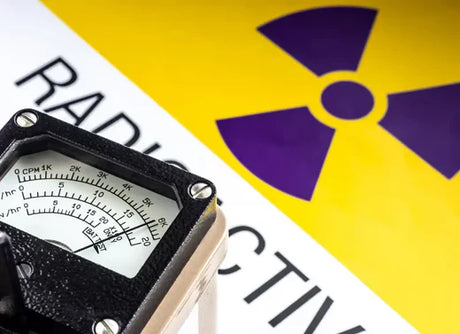If you live in a climate that experiences dramatic shifts between the seasons, then your summer survival bag will look different than your winter one. In colder seasons, the snow allows you to carry more gear by utilizing a sled, where the summer limits you to what you are able to carry on your back. Knowing how and what to pack in your bug-out bag is a critical skill. In this blog, we will tell you the best survival essentials, how to pack them, and our expert tips for choosing the right gear to help you survive anything.
What kind of bag should you choose for packing survival gear?
We have tested a lot of bags on our Youtube Gear Reviews, and we’ve found the bags that perform best are both customizable and comfortable. Our current choice is the Markhor 45- Vanquest. Your packed bag will range from 40-75lbs, depending on what you choose to carry, so your choice of bag will need to be able to handle the weight.
 Can you carry this much weight over a long distance in rugged terrain? If you want to learn more about fitness training that can help you develop your strength, we have a blog that can help to train multiple muscle groups; good core strength is an essential facet of preparedness planning. Being prepared is about more than a bomb shelter, it is preparing your mind and body, and having the right food and gear to survive.
Can you carry this much weight over a long distance in rugged terrain? If you want to learn more about fitness training that can help you develop your strength, we have a blog that can help to train multiple muscle groups; good core strength is an essential facet of preparedness planning. Being prepared is about more than a bomb shelter, it is preparing your mind and body, and having the right food and gear to survive.
Our fool-proof guide for choosing the right bug-out bag:
-
We recommend you opt for a minimum 40-50L bag with external pockets for added customization. This allows you to pack well and include supplies on the outside of the bag that you might need for quick access, such as bear flare, knife, or water.
-
Choose a bag with high-quality stitching, durable and well-made zippers, and a fabric that is rugged. Opting for a cheap bag could leave you in the woods with a broken shoulder strap and 60 pounds to drag through rough bush trails––not ideal.
-
Always choose an ergonomic bag that allows you to comfortably carry your gear––especially if you’re using it regularly for camping and hiking. This is increasingly crucial the longer the distance you will be travelling.
- If you’re wanting to avoid attention, the Greyman approach might be the best choice. Blending into the crowd is a fantastic survival tool, and choosing a bug-out bag that is high-quality but otherwise inconspicuous is a great strategy for survival––especially in an urban environment.
How to pack your three-season survival bag
There are several items that will benefit you by being easily accessible while you are wearing your pack. In addition, we always store a wool blanket or sleeping bag on the outside of the bag, as it takes up too much precious room inside.
"The best approach to packing is to choose the most lightweight, compact, and high-quality version of every item in your pack. Choosing these types of items will help you reduce weight, pack efficiently, and carry more."
We break down what goes inside and outside our bag by ensuring need-to-access items are stored outside and are easily accessible and non-essential items like spare clothes or cooking gear are on the inside. This breakdown can also help you prioritize items that you will need for your pack overall by organizing items by available space and necessity of use.
How do you choose what to pack in your survival kit?
To us, there are two overarching considerations when preparing to head out into the wilderness or preparing to bug-out.
-
What is needed for your survival?
You will need food, water, warmth, and shelter––you can build out your gear from these fundamentals. Choose high-quality tools that will be useful for multiple applications and are durable enough for repeated use such as knives for getting wood and hunting or harvesting food, animal fibre clothing for keeping dry and insulating against the cold, quality bedding to sleep, and various tools for protection from wildlife or dangerous humans. When you build out your pack it is important to think of the things you take for granted that are essential for your survival and ensure you have them prepared for an emergency situation.
-
Are you surviving or are you thriving?
You can survive on barely anything, but you’re going to be miserable. Don’t set yourself up for failure by eliminating gear that will make your life easier. Before you lighten your pack, ask yourself if you genuinely see yourself using this object and how. Items such as toilet paper tabs are lightweight and will make your life a whole lot better when you’re out in the backcountry.
When you have a good understanding of what you need to survive, you can choose items that will help you thrive––without burdening yourself with too much extra weight. Thriving is knowing the difference between unnecessary gear and an object that will assist you in multiple bushcraft tasks is a huge part of learning how to build your survival bag. By packing smart, you can live well in any environment.
5 Common ways to customize your pack.
-
Adding a holster for an axe or clipping on tools
-
Choosing a bag with adjustable straps
-
Clips for adding external flaps or bags
-
Elastic pockets which can be utilized for multiple objects.
-
Adding removable pouches
Essential Items to pack inside your survival bag:

Food
A good store of freeze-dried food is a necessity. Many products allow you to eat right in the package and require only boiling water to cook. This eliminates excessive waste and cooking supplies.
Water filtration system
A more comprehensive water filtration system, such as the MSR Water Purification Kit will be an invaluable addition to your summer bug-out bag.
Generator

Even in grid-down, there are important electrical devices that will remain extremely useful such as, water purification unit, radio, and flashlights. There are a number of options for solar-powered, which can charge while you move by attaching the panel to your pack, or crank powered generators, but having one will be indispensable.
Clothing
Even in the summer, the clothing you pack will have a big impact. Prepare for cold evening temperatures and adverse weather conditions. We recommend thinking in layers. Ensure you pack thermal layers composed of animal fibres such as wool, waterproof shell, waterproof or fast drying boots, as well as lightweight layers and head coverings to protect from the heat as well as pests.
Cooking
A lightweight cooking system is going to prove invaluable. While it is possible to cook over a fire, we prefer a cooking system––especially for long term survival. If you want to learn more about different fires and how to build them, you can find more on our blog.
A closer look at the items to carry on the outside of your survival bag:
Food & Water
-
Water Bottle
Quench your thirst while you continue moving forward. We recommend choosing a stainless steel bottle that can double as a pot to boil water in to limit the number of cooking utensils you need to pack.
-
MREs
If you have to keep moving, having an accessible snack to boost your energy close at hand will help you to recharge without losing ground. The side pouch on your pack can hold both food and a water bottle, or you can add an external pouch.
Safety
-
Knife
Mount your knife on the strap of your pack for quick access when you need it most. Choose a knife with a solid case that has a clip that can keep it firmly on the strap of your bug-out bag.
-
Bear flare
A flare that you can deploy quickly can help defend you from aggressive wildlife as well as signal a nearby plane or vehicle if you are in danger. Keep at least one on the outside of your pack for access in a flash.
-
First aid kit
An external pouch is going to allow you to access critical first aid supplies quickly. Choose a bag that has an external pouch or pocket to accommodate first aid supplies or allows you to clip on an external first aid pouch.
-
Flashlight/ Headlamp
If you are going to be moving in the dark, having a flashlight or a headlamp can prevent unnecessary injury and danger. You can choose one with multiple light options including an emergency flash if you need to be seen.
Navigation tools

-
Compass / GPS
Learning navigation is a necessary skill for anyone taking survival seriously. We wrote a great blog on how to orient yourself in a grid-down, where satellites and power will not be available. Learning how to navigate manually is an essential skill.
A GPS, including the one on your phone, is always a great tool that can help you navigate tough terrain without the need for declination information or local maps––however, these items are invaluable.
-
Maps
A waterproof map book of your area with up-to-date declination information is essential for manual navigation.
Other key essentials
-
Radio / Satellite phone
Communication tools are necessary for backwoods camping, where you can encounter emergencies and require help. This is especially important if you are doing survival training as a new prepper.
-
Solar panel(s)
A solar panel that is flexible and can clip onto your bag can be gathering energy while you move. This can save you time and ensure you always have power.
Additional Gear:
- Trowel
- Nalgene Stainless Steel Bottle
- Wool Blanket
-
Toilet paper tabs
- Survival Lilly APO-1S Knife
-
Knife Sharpening
- Fire Kit
- Radio Baofeng
- Silky Zubat 390
- Tarp
- First Aid supplies
- Flashlights
- Pressurized water bladder
- UCO Titanium Utility Spork
Want to learn more?



